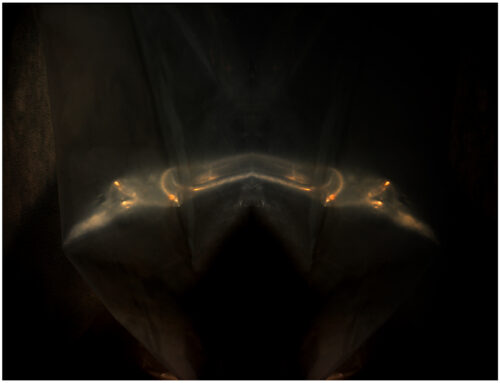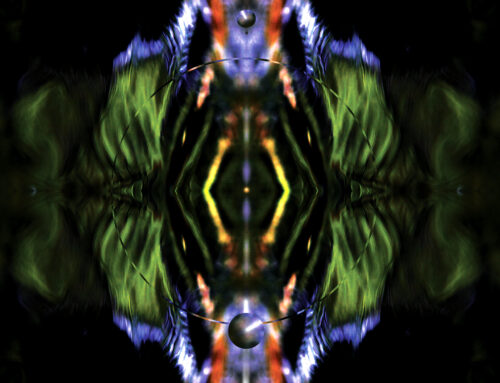
PneumaShift 14, oil on panel, 1981

In This Edition
- The Fluted Brow / Back with Kados
- Over at Marrowstone Press
- The Interview: Nirupa Umapathy
- Featured Artist Series: Chang Lek
- Projects /2020
THE FLUTED BROW
Galen, you look somewhat fluted in the brow, a bit overly fixated. Why the consternation? Thinking of Vincent again?
Precisely, Kados. Vincent and I chat when I’d rather not have you bantering about.
What can the Dutchmen give you that I can’t?
I’d rather not go into it just now, Kados. Besides I’m mostly concerned about getting the art out…or not.
Out of your imagination? Why should getting art out and into the studio give you such a rippled face; you’ve been doing it for half a century.
True, but it’s never the same path taken. Not for me anyway. In any case, I’ve…

“Weltner’s agile, passionate ear guides and clarifies imagination, as the poems’ emotional truths dance to an intricate, organic music, delicate, tidal.”
William O’Daly
“Weltner confronts the reality of a zone poised beyond the limit of death conveniently drawn by us.”
Kathleen Fraser
Nirupa Umapathy is an independent writer, researcher, and social entrepreneur, writing across a variety of media including fiction, non-fiction, and essays to investigate the role of the individual as a maker of change and culture. After 14 well-spent years in financial services, she founded a creative thinking and learning community called Salons for Life for individuals to intentionally gather and co-create roadmaps for ideation and action nourishing personal and social change. Nirupa writes at www.radicaleverything.com/
a conversation with NIRUPA UMAPATHY
Galen: I’ve long been fascinated with the shifting arc of the spirit’s journey. Was there a specific and potent event, Nirupa, in your mid-career that deflected your trajectory? Or was the change subtler, something slowly and finally coming into focus?
Nirupa: Only looking back, is it evident that my preparation for change had started over a decade ago. I worked in the heart of the financial markets and got to witness the financial crisis in 2008 as a middling salesperson. The systemic devastation that followed was mirrored by a deep sense of personal displacement, even if I benefited tremendously from the professional success that followed. This contradiction never sat well within. I felt like I was sleepwalking for much of 2008 and 2009, and a brief but precipitous fall into depression was my first wake-up call. The journey of self-healing began with a more earnest practice of mind-body work through Pilates and then yoga, and 8-9 years of therapy that was more spiritual counseling. This revelation emboldened me to leave many known paths of security in 2015—a well-worn relationship that had been my anchor for 17.5 years, half my life back then, and a well-established career on the sell-side of finance. I took a risk and joined a smaller firm, and that job prematurely came to an end in 2016. I now knew the cycle of my career in finance was over, and I was being prompted to be bolder and take even bigger risks. In 2017, after weeks of insomnia, I woke up one day, finally present to an unknown voice within; I will never forget this day. Under white ceilings and fans slowly spinning, I heard, “take your time back.”
I thought I was delirious. And for a few minutes, I did not know what this could mean. But I soon realized it was a clarion call to take my autonomy back, to be the keeper of my own time, and to see what follows. And thus, a magical, exhilarating, and wondrous journey began: Of being a student of change. And to be an average student of change, you must study time and the space in which such change takes place.
And this is where I am. Puzzling, wrestling with the thrumming pulse of the unseeable but so ever-present—the song at the atomic level
FEATURED ARTIST: CHANG LEK

Little Elephant, acrylic on canvas, 60″ x 72″ ca. 2003 by Chang lek
Chang Lek is from the Akha hill tribe in the mountainous part of Northern Thailand, though when he was a young boy, he was sent to a Buddhist School in Wat Sa Kaow, near Bangkok, until he was nearly fifteen. After a few years back in his village, he was sent to Chiangmai to work and provide income for his family. I met him and brought him into the studio as an assistant. I went on a trip for a few weeks, and when I returned, I discovered Lek had taken it upon himself to do his own paintings. These were stunning, especially for someone who had never studied art. Over the next few years, I began to encourage that part of his spirit. Part of that encouragement took us to Europe, where he feasted on the paintings of Rembrandt and Van Gogh, and then down to Paris we went to breathe in that remarkable City of Light: The Louvre, The Musée d’Orsay, Picasso, Sainte Chapelle, etc.
COMING SOON: A NEW PROJECT FOR 2020
A GRAND COLLABORATIVE GIFT EXCHANGE
BETWEEN ELEPHANT AND HUMAN
LINKS
Wishing all of you a Magnificent Holiday on into the New Year!

Galen Garwood












Leave A Comment
You must be logged in to post a comment.